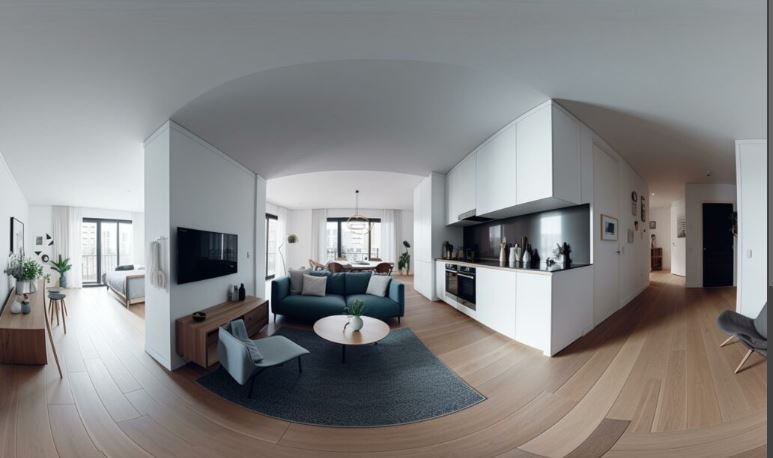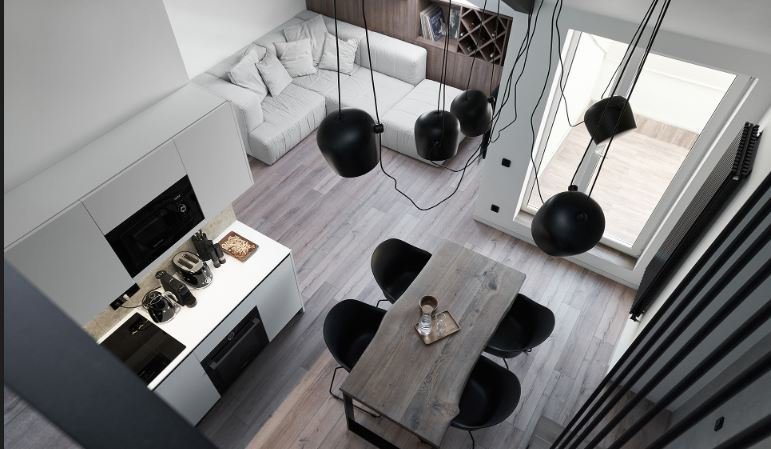Virtual reality (VR) is poised to revolutionize real estate photography by offering immersive property experiences. With VR, potential buyers can virtually walk through homes and explore every corner without physically visiting the property. This technology enhances the viewing experience, allowing users to interact with the space in a way that traditional photos cannot. As VR technology becomes more accessible, expect its use in real estate to grow, providing buyers with a more engaging and informative look at properties.

Advancements in 360-Degree Photography
360-degree photography is becoming increasingly popular in real estate, offering a comprehensive view of properties. By capturing panoramic images, real estate professionals can provide an all-encompassing look at homes, allowing buyers to virtually tour rooms and spaces. As 360-degree cameras and software continue to advance, these virtual tours will become more detailed and user-friendly, offering higher resolutions and smoother navigation for a better user experience.
Enhanced Drone Photography
Drone technology is advancing rapidly, bringing new possibilities to real estate photography. Modern drones are equipped with high-resolution cameras and advanced stabilization systems, enabling stunning aerial shots and videos. Drones provide unique perspectives of properties, including sweeping views of landscapes, rooftops, and surrounding areas. Future trends will likely see even more sophisticated drones with improved capabilities, such as better zoom functions and enhanced image quality.
Artificial Intelligence (AI) in Image Editing
Artificial intelligence (AI) is transforming the way real estate photos are edited. AI-powered tools can automatically enhance images, adjust lighting, and correct imperfections with minimal manual intervention. These tools streamline the editing process, ensuring consistent, high-quality results. As AI technology evolves, it will continue to offer advanced features such as automated scene recognition. In addition, intelligent color correction, further improving the quality and efficiency of real estate photography.
Augmented Reality (AR) for Interactive Listings
Augmented reality (AR) will enhance real estate listings by adding interactive elements to property photos. AR can overlay additional information, such as furniture placement, renovation options, or neighborhood details, directly onto images. This interactive approach allows potential buyers to visualize how spaces can be used or customized, providing a more engaging and informative experience. As AR technology becomes more integrated into real estate platforms, it will offer more dynamic and interactive property presentations.
As real estate photography evolves, professionals are looking beyond traditional methods to capture properties in immersive new ways. The integration of virtual staging and interactive walkthroughs has completely transformed how buyers experience listings remotely.
This technological shift mirrors innovations in other visual industries, where platforms like Casino Jokaviproom are redefining user engagement through cutting-edge interfaces. Similarly, 360-degree virtual tours are becoming the standard for premium property marketing.
Forward-thinking photographers who embrace these trends position themselves at the forefront of the industry’s digital transformation.
High Dynamic Range (HDR) Imaging
High dynamic range (HDR) imaging is becoming a standard in real estate photography, providing photos with greater depth and detail. HDR captures multiple exposures of the same scene and combines them to create a single image with enhanced contrast and color accuracy. This technique helps highlight details in both bright and dark areas, resulting in more visually appealing and realistic property images. As HDR technology improves, it will continue to play a crucial role in showcasing properties effectively.
3D Property Models
3D property models are gaining traction in real estate photography, offering detailed and interactive representations of properties. These models allow potential buyers to explore homes from various angles and perspectives, providing a more comprehensive understanding of the property’s layout and features. As 3D modeling technology advances, it will become increasingly sophisticated, offering more accurate and immersive property representations.
Automated Photography Solutions
Automated photography solutions are emerging as a trend in real estate, with advancements in robotic cameras and automated shooting systems. These solutions can streamline the photography process, capturing images at predefined intervals or angles with minimal human intervention. Automation enhances efficiency and consistency, allowing real estate professionals to focus on other aspects of their work while ensuring high-quality, uniform property photos.
Integration with Smart Home Technology
As smart home technology becomes more prevalent, real estate photography will increasingly feature these innovations. Photos and videos highlighting smart home features, such as automated lighting, security systems, and energy management, will attract tech-savvy buyers. Showcasing these features effectively requires a keen understanding of how to capture and present technology in a way that emphasizes its benefits and functionality.
Conclusion
Future trends in real estate photography are now revolutionizing the industry with advancements in VR, 360-degree photography. Also available is drone technology. AI and AR will enhance image editing and interactive listings, while HDR imaging and 3D property models will provide more detailed and engaging visuals. Automated photography solutions and the integration of smart home technology will further streamline and enhance the property presentation process. Embracing these trends will help real estate professionals stay ahead in a competitive market and offer buyers an enriched property viewing experience.

